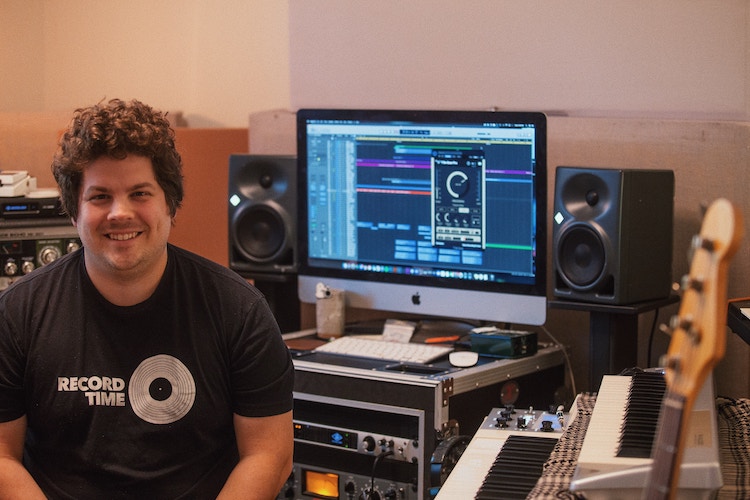Working in my studio as long as I have, I’ve learned a lot about the topics below. It does take some time to develop your ear and learn the skills required to deliver Master-Quality tracks to submit for Music Licensing opportunities. In recent years, advancements in technology have made it increasingly feasible for aspiring musicians and producers to create professional-grade music tracks from the comfort of their own homes. With the right tools, knowledge, and dedication, a home studio can become a breeding ground for master quality music tracks. This essay aims to explore the essential elements and steps involved in creating such high-caliber music within the confines of a home studio.
Acoustic Treatment and Monitoring:
The foundation of a home studio begins with proper acoustic treatment. Minimizing reflections and optimizing the listening environment is crucial for accurate monitoring. Investing in acoustic panels, bass traps, and diffusers can significantly improve the studio’s sound quality. Equally important is selecting reliable studio monitors and headphones to ensure accurate playback. It is amazing to me how accessible these materials have become in the last 15 years. Ultimately you want your tracks to sound balanced no matter whose system they get played on.
Quality Recording Equipment:
To capture pristine audio, investing in quality recording equipment is essential. A professional-grade microphone, audio interface, and preamp can make a world of difference in capturing clean and detailed recordings. Additionally, using high-quality cables and ensuring proper signal flow are vital to maintain the integrity of the audio throughout the recording chain.
Digital Audio Workstation (DAW) and Plugins:
A DAW is the central hub for music production. Choosing a DAW that aligns with one’s workflow and preferences is crucial. Popular options like Ableton Live, Logic Pro, Digital Perfomer or FL Studio provide a range of tools and features for recording, editing, and mixing music tracks. Complementing the DAW with a collection of high-quality plugins, such as EQs, compressors, reverbs, and virtual instruments, can further enhance the sonic possibilities.
Composition and Arrangement:
Let’s face it, great sounding tracks come from well crafted arrangements. Crafting master quality music tracks begins with strong composition and arrangement skills. Understanding music theory, melody, harmony, and song structure can be a real advantage. Experimenting with different musical elements, textures, and dynamics allows for creating engaging and captivating tracks. Attention to detail in arrangement helps ensure a cohesive and polished final product.
Sound Design and Instrumentation:
Sound design plays a crucial role in creating unique and professional-sounding music tracks geared for Music Licensing. Utilizing virtual instruments, synthesizers, and samplers enables musicians to experiment and create their own signature sounds. Layering multiple sounds and textures, along with careful attention to sonic balance, brings depth and richness to the overall production.
Mixing and Editing:
The mixing stage is where individual tracks are balanced, EQed, and processed to achieve sonic clarity and cohesion. Utilizing techniques like panning, leveling, compression, and automation, the mix engineer ensures that every element occupies its rightful place in the stereo field. Attention to detail, critical listening, and an understanding of frequency balance are crucial during this stage. I do want to point out that if you’re not happy with your mixes find someone who can help with this process. Sometimes the best way to learn how to mix is to watch and hear someone else do it first!
Mastering:
Mastering is the final step in preparing a music track for distribution. It involves optimizing the overall sound, ensuring consistent levels, and adding final touches to the mix. Employing specialized mastering plugins or outsourcing the process to a professional mastering engineer can elevate the track’s overall quality and loudness while maintaining its dynamics.
Creating master quality music tracks in a home studio requires a combination of technical skills, artistic vision, and attention to detail. With the right equipment, software, and knowledge, aspiring musicians and producers can unlock the creative potential of their home studios. By focusing on aspects such as acoustic treatment, recording equipment, composition, sound design, mixing, and mastering, they can achieve professional-level results and compete in the ever-evolving world of music licensing. Embracing the journey of continuous learning and experimentation is key to unlocking the true potential of a home studio and creating music tracks that leave a lasting impact on listeners.
Discover Where The Money’s Hiding in the Music Business, in 2023

